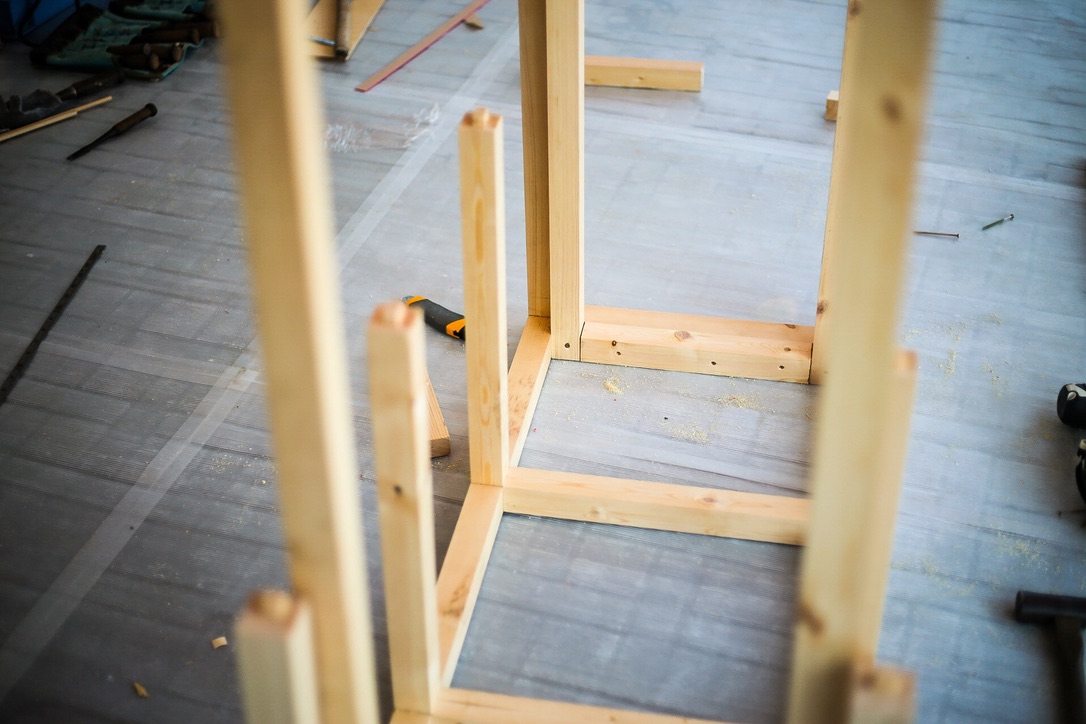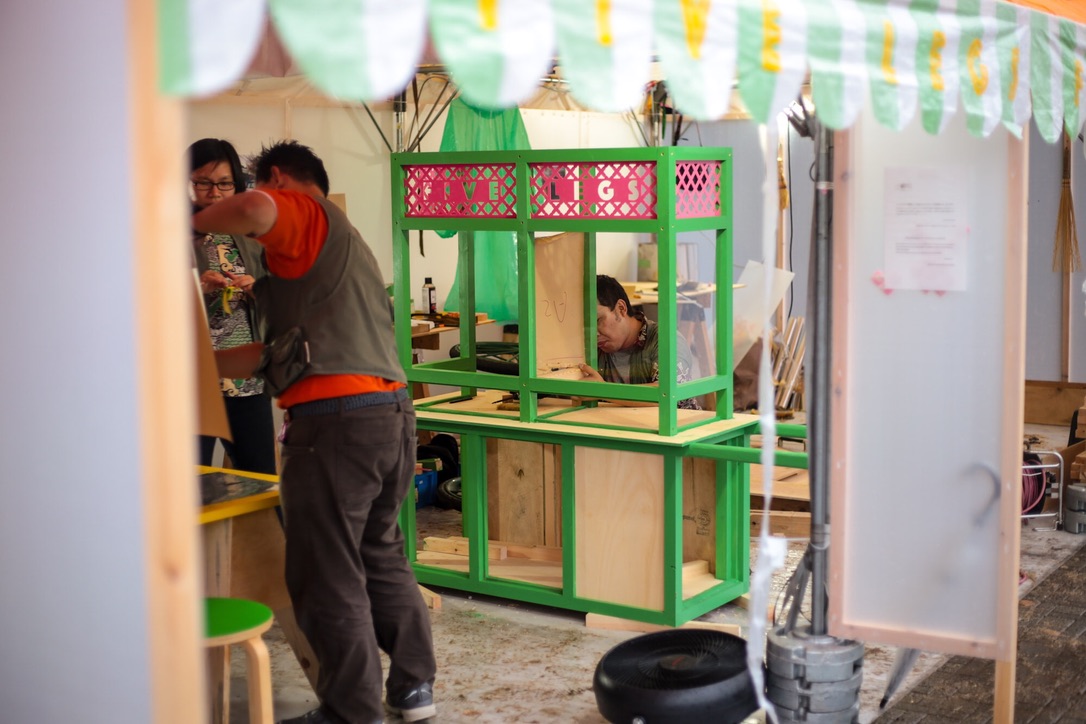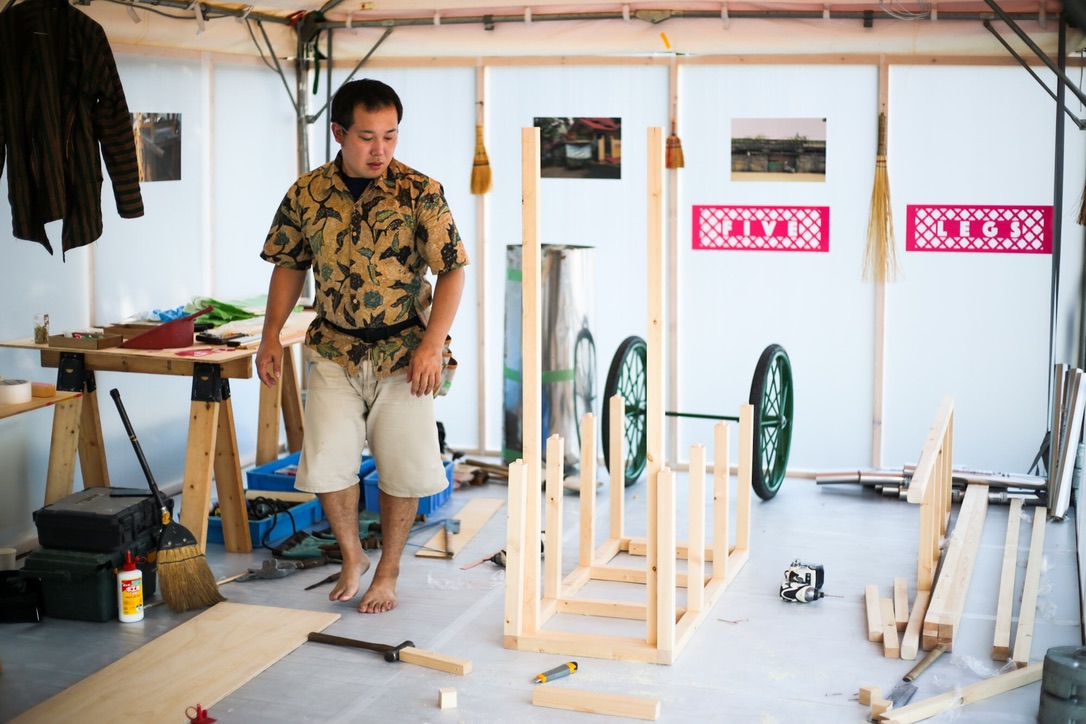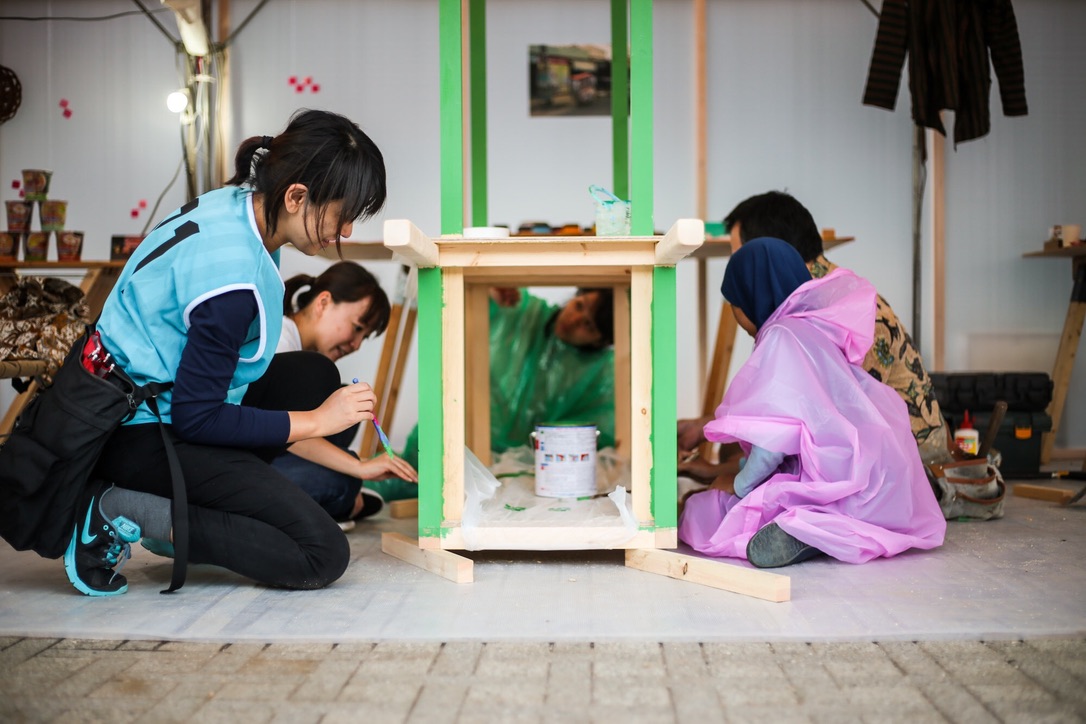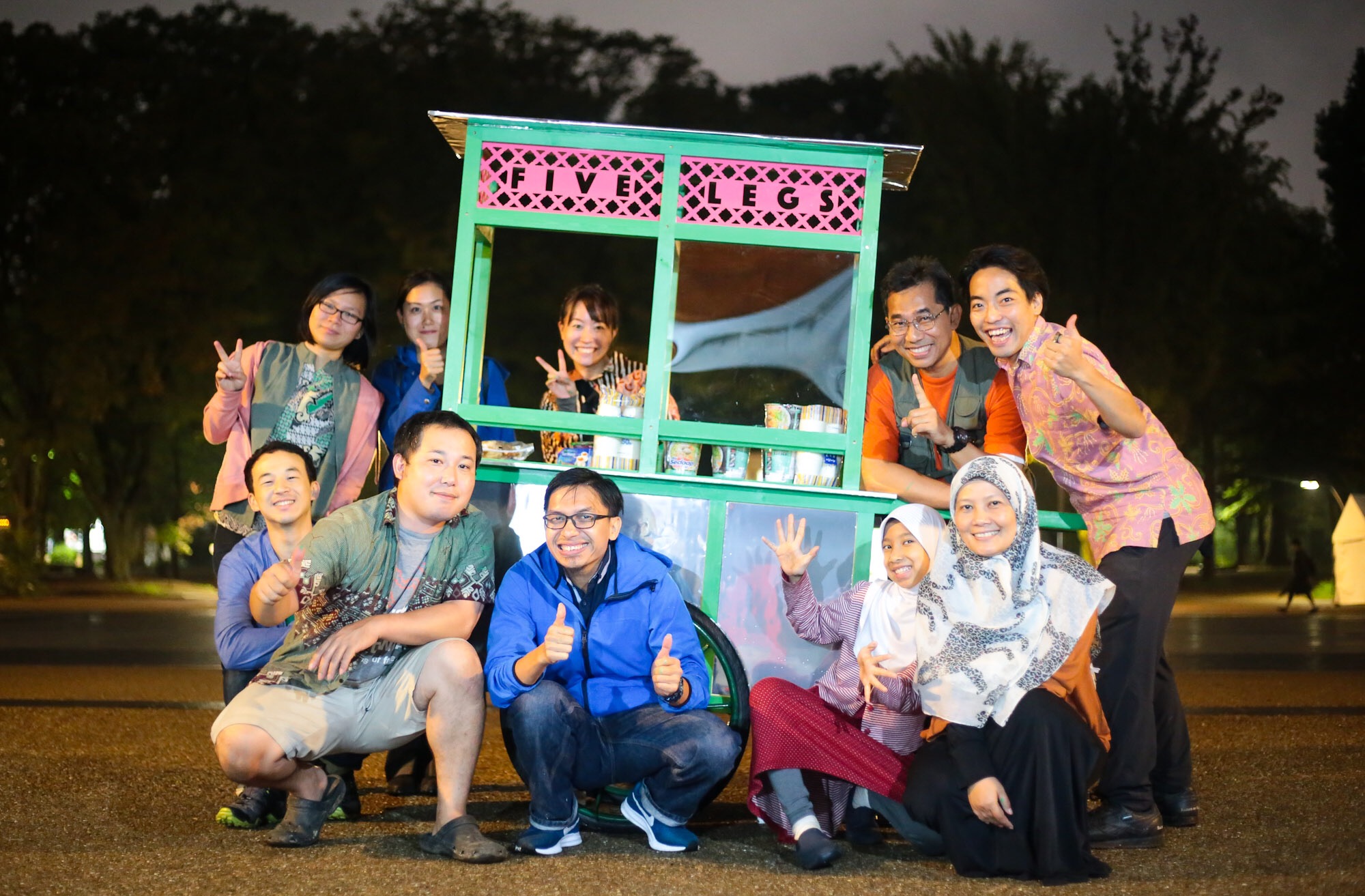
photo by Yuji Ito
FIVE LEGS
ファイブ・レッグス
Statement
"Five Legs"
There is a narrow alleyway in front of my house in Jakarta. All sorts of street vendors come and go throughout the day in this alleyway. Vendors sell porridge and bread for early morning, and noodles and soups for lunch. The street vendors of Nasi Goreng move around the area until three in the morning. Not only are there food stalls, but also stalls for daily items, and stalls full of toys, and occasionally a clothing repair stall carrying a sewing machine.
These street stalls are called KAKILIMA in Indonesian. KAKI means leg, LIMA is five in number. Direct translation is “FIVE LEGS”. I was wondering why they call street stalls “FIVE LEGS”.
Recently, it occurred to me and I asked a local friend, and the response was this.
“Two wheels are for moving, one stopper for stopping and securing the stall the other two are the vendor’s legs.”
Laughing at their idea of counting everything and calling them “legs”, it also made me realize that “a person” was also considered as part of the essential material condition together with the wheels and the stopper as three elements that keep the stall self-supported.
“FIVE LEGS” simply describes three components of street stalls. First is movement. A stall traveling through a city. Second is pause. Randomly parking and setting up a place. Third is people. Characteristics of the owner coming through.
The reason why I cannot take my curiosities away from the street vendors passing by in front of me may lie in the fact that I saw it as “the smallest project” wherean individual combines with their surroundings and spontaneously contributes to society using a single body, having three major elements as the foundation. Instead of adjusting to society, this “reverse behavior” making society adjust to them, cunningly working its way through the existing scheme with humor, can be found everywhere in Jakarta, and excites a person like me, brought up in Tokyo.
Aren’t we all unconsciously trying to meet social expectations? It felt as if I am being questioned in this way. In the middle of Tokyo, Can we overcome this constraint and question? In other words, by thinking about the question “Can we realize ‘FIVE LEGS’ in Tokyo?” I want to start a study about the relationship between “a person and society.”
ステートメント
「5つの脚」
ジャカルタの家の前に、小さな路地がある。この路地を一日中ひっきりなしにあらゆるタイプの屋台が行き来する。早朝はおかゆとパン屋、お昼は麺類や汁物。ナシゴレンの屋台は夜中の3時まで歩き回っている。食事だけでなく、日用品の屋台や、おもちゃだらけの屋台、ときどきミシンを乗せた洋服修理の屋台もやってくる。
これらの屋台は、インドネシア語で「KAKI LIMA (カキリマ)」と呼ばれる。KAKIは脚、LIMAは数字の5。直訳すると「5つの脚」。なぜ屋台を「5つの脚」と呼ぶのかよく分かっていなかった。最近ふと現地の知人に質問してみたら、こんな答えが返ってきた。
「移動するための車輪がふたつ、停まる時に安定させるストッパーがひとつ、あとのふたつは人の足だよ。」
全部ひっくるめて「脚」にしてしまう発想に笑いつつ、車輪とストッパーが屋台を自立させるために必要な三点になるのと同等に、「ひとりの人」が必須条件であることに、改めて気づかされた。
「5つの脚」は、屋台の三つの要素を端的に表していると思う。ひとつめは移動。都市を遊動するその姿。ふたつめは停留。そこかしこで立ち止まり場を展開。みっつめは人。主人のひととなりが滲み出る。
目の前を行き交う屋台に興味が尽きないのは、この三大要素を土台に、ひとりの人が、自分にできることと、身の回りにある材料を組み合わせ、即興的に身一つで社会に関与する「最小のプロジェクト」に思えたからかもしれない。社会に自らを適合するのではなく、既存のスキームをユーモア混じりで時に狡猾にすり抜け、自らに社会を適合させてしまう「逆転のふるまい」は、ジャカルタのそこかしこに生き残り東京育ちの私の感覚を揺さぶる。見えない何かに囚われちゃいないか?そう問われているような気がする。
東京のどまんなかで、あたらしい屋台を試作してみることから、この囚われと問いかけを乗り越えることはできないだろうか?
言い換えれば、「東京で『5つの脚』は可能か?」と考えてみることから、「ひとりと社会」のあるべき関係性についてのスタディをはじめていきたい。
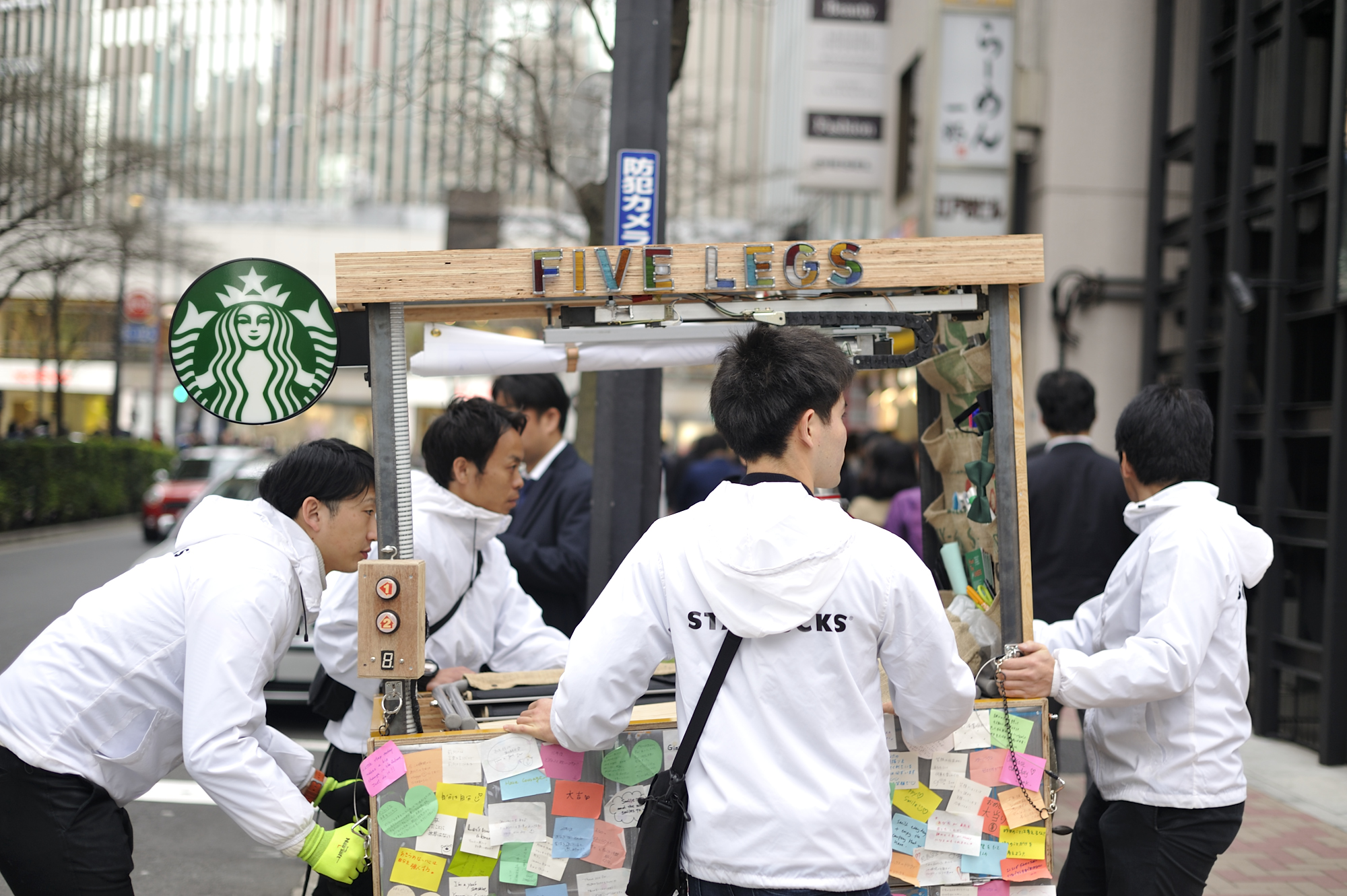
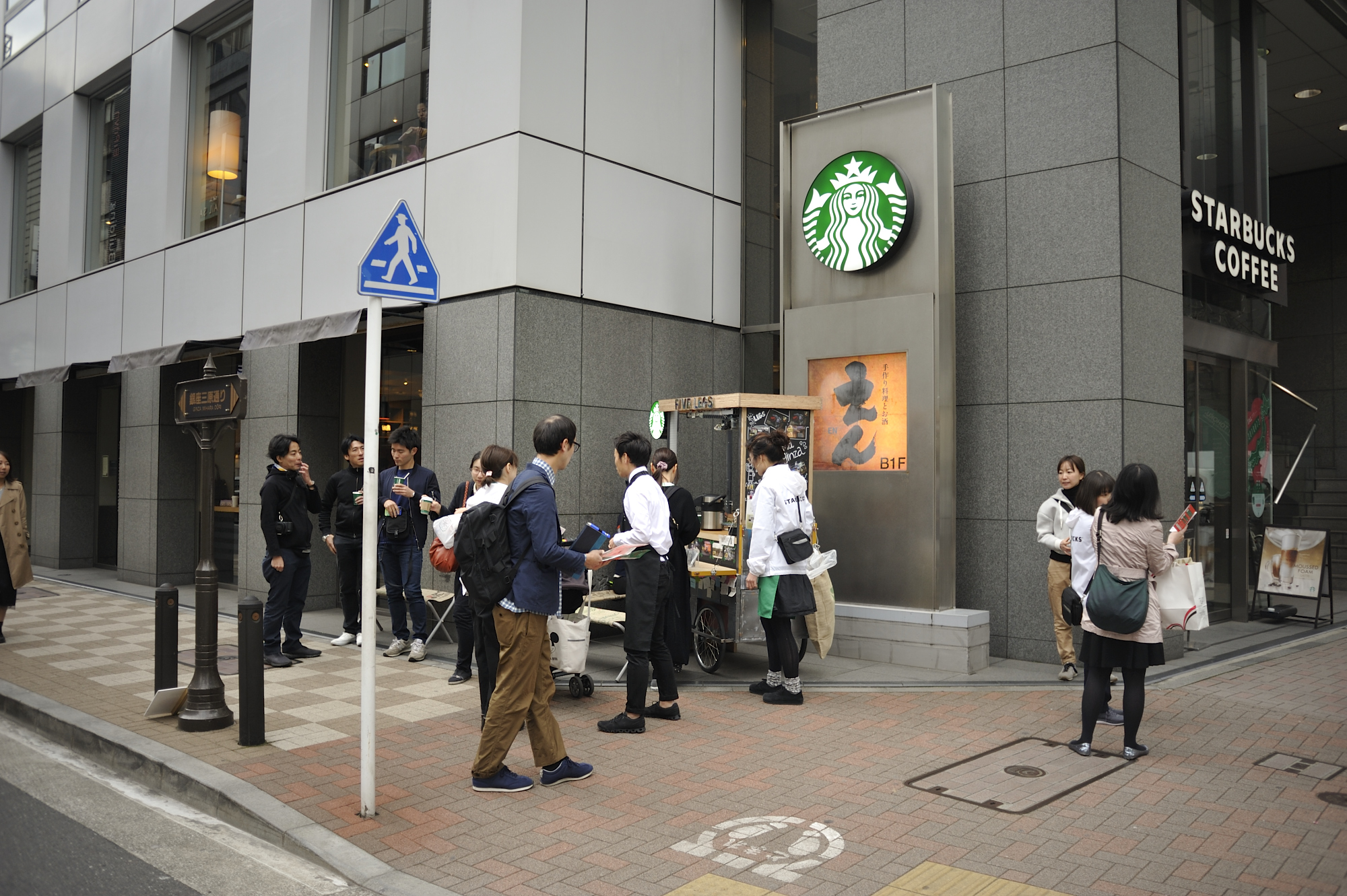

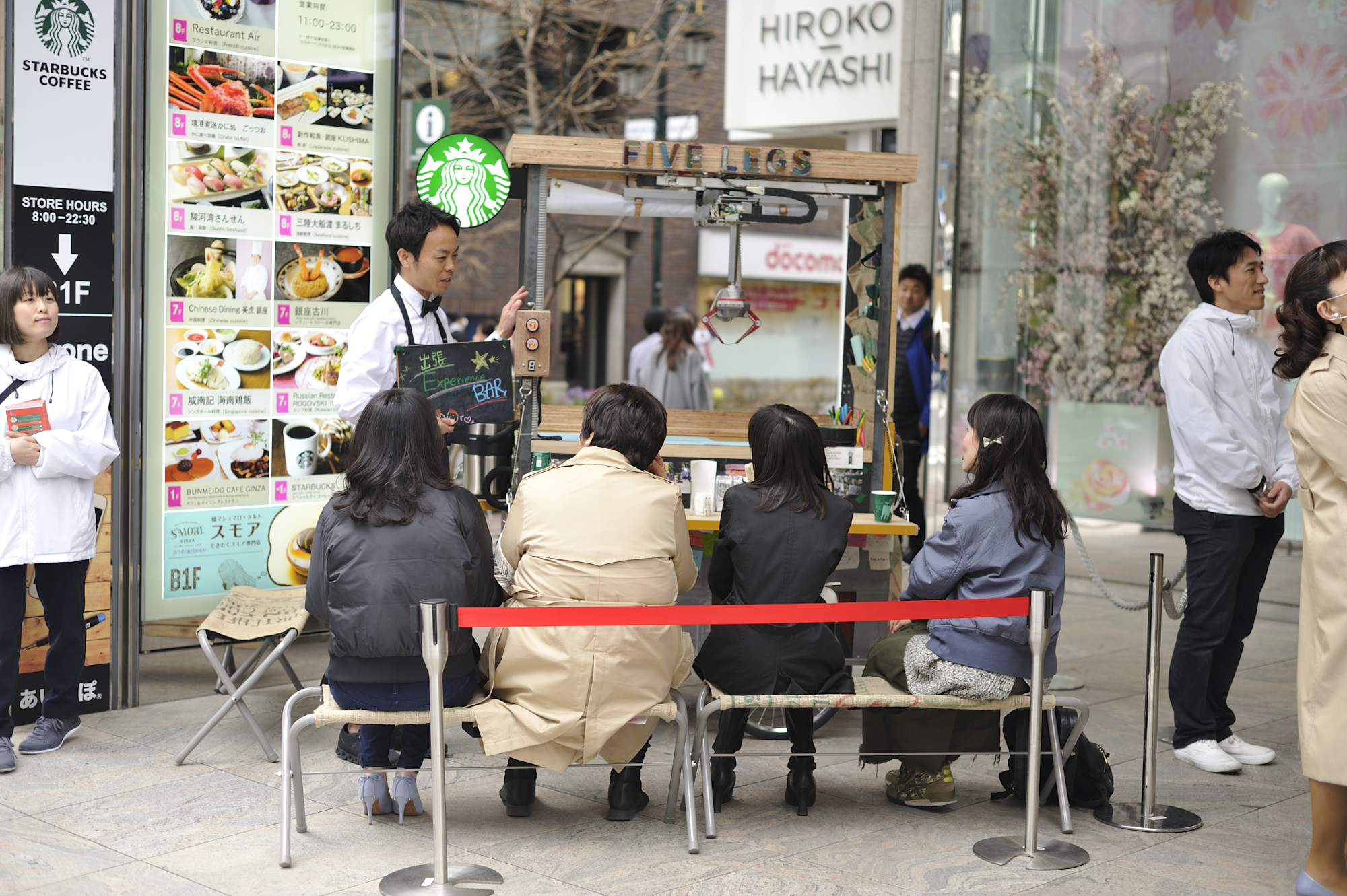
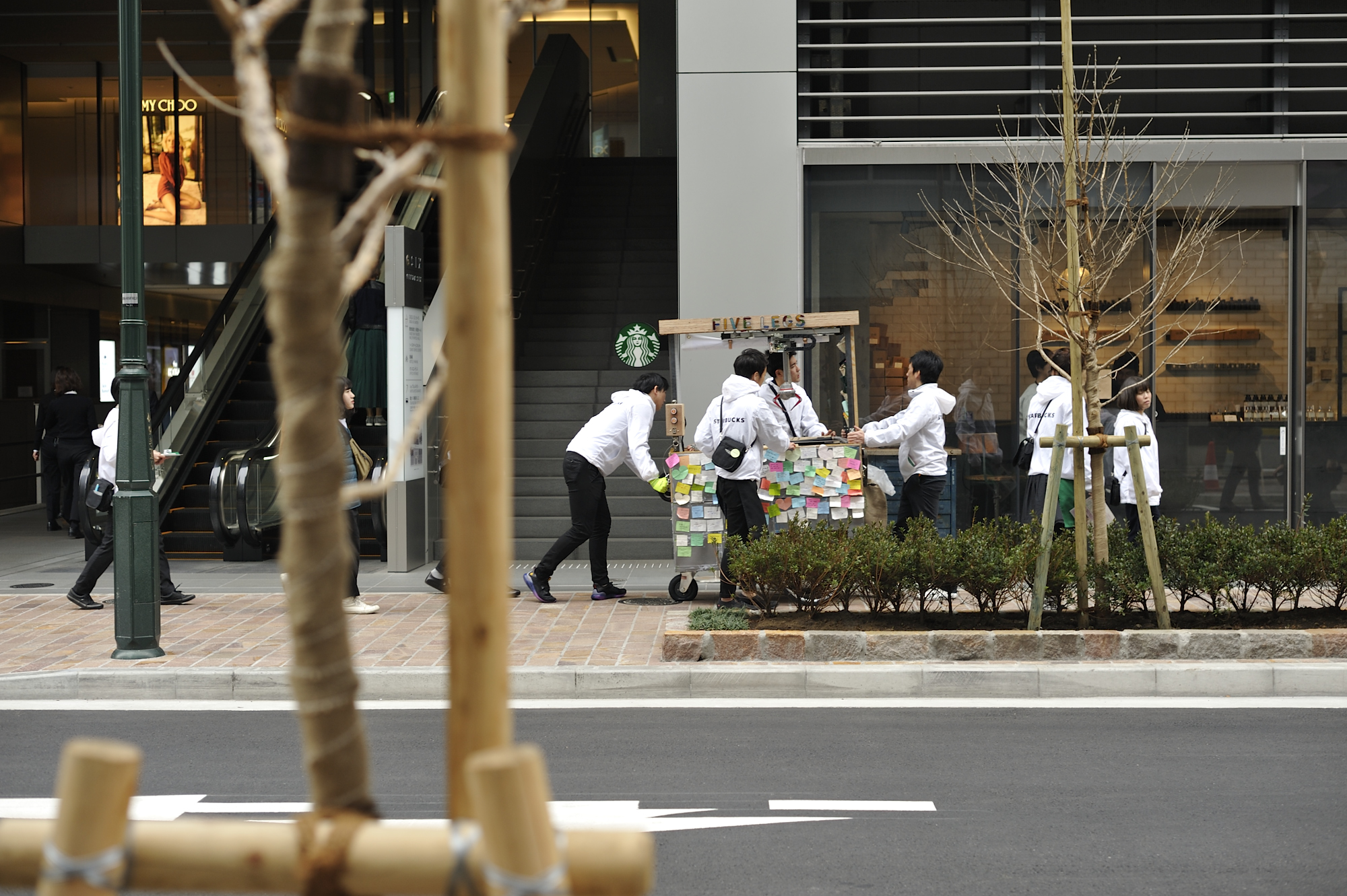
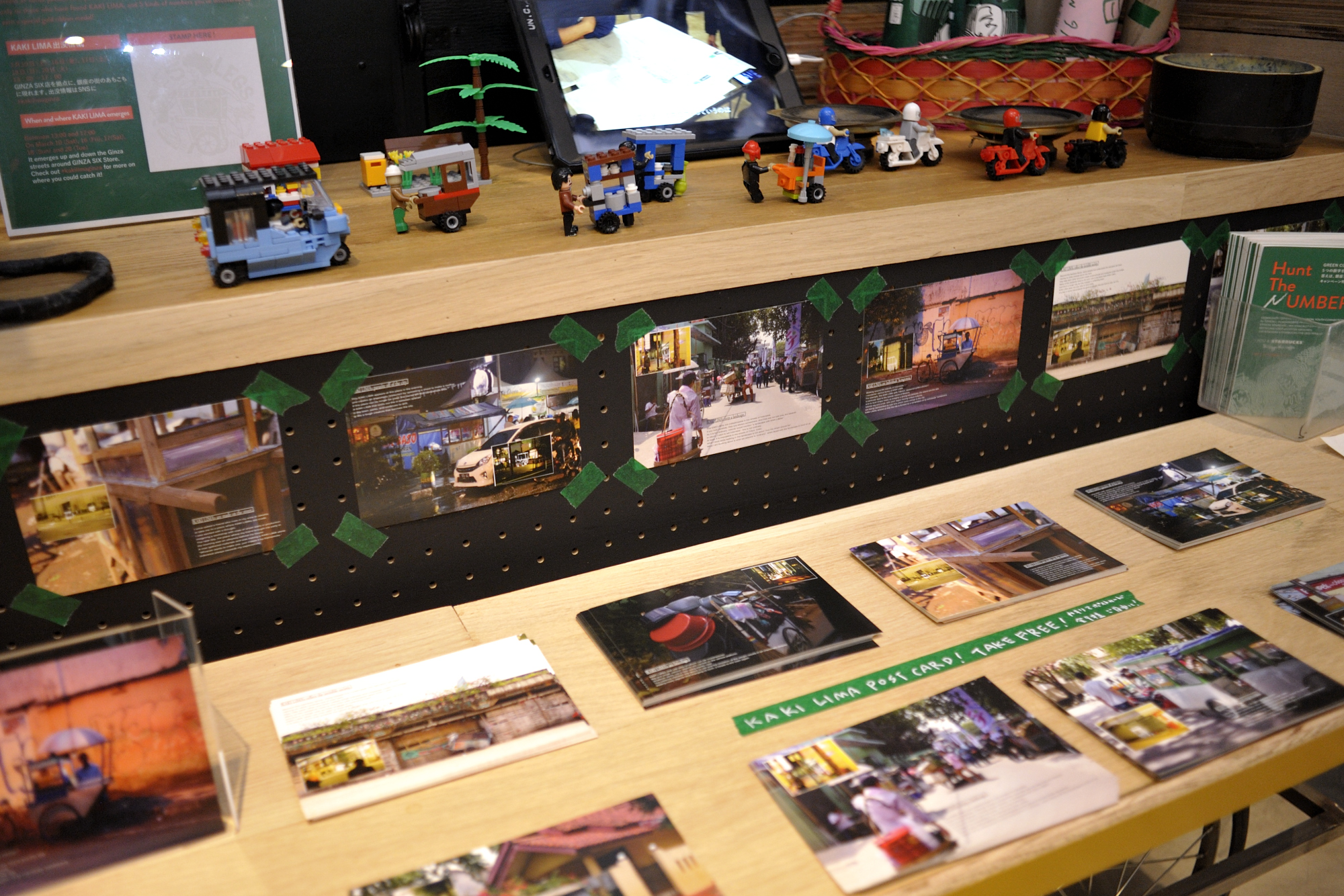
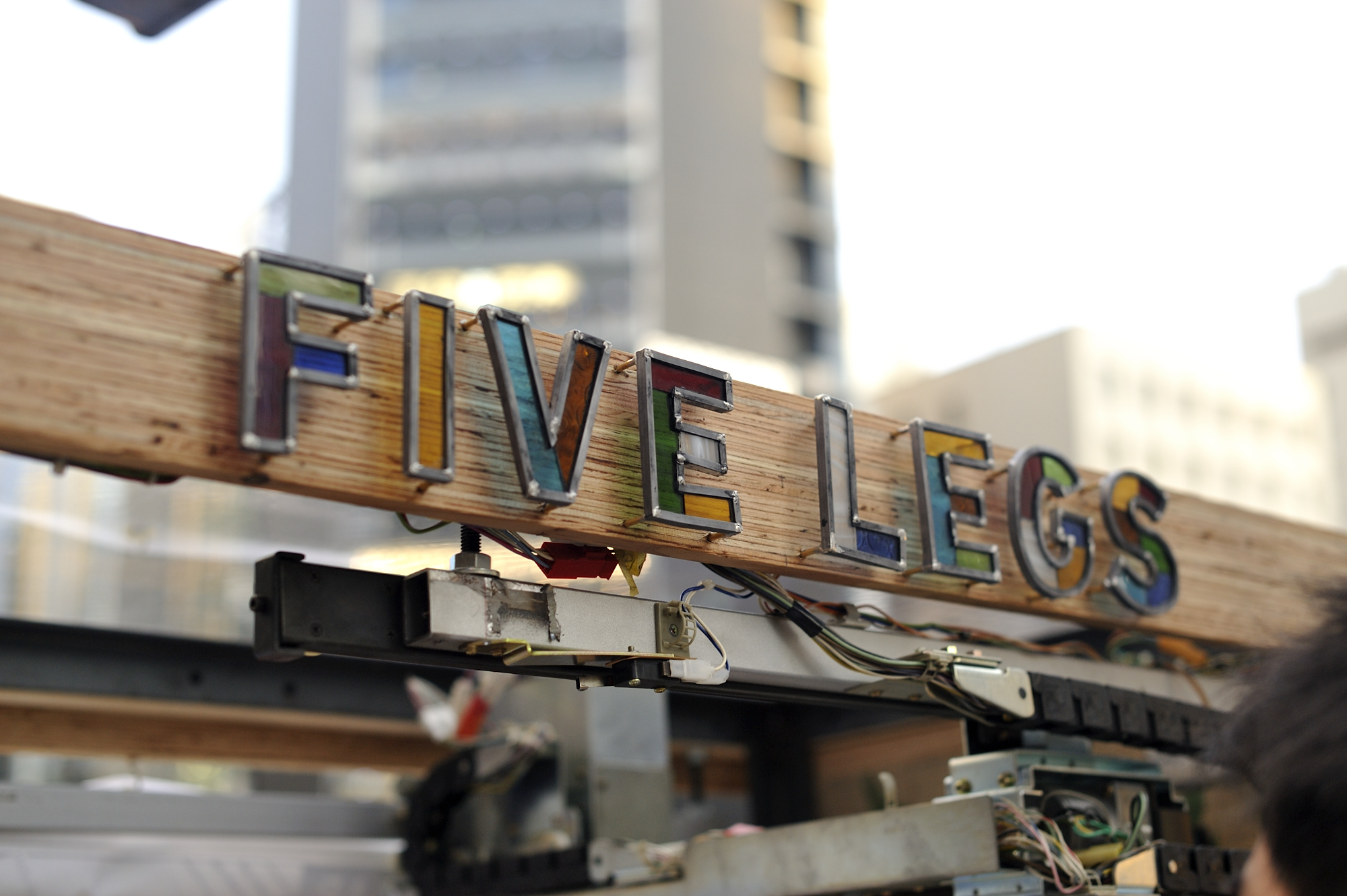

photo by Yuji Ito
Outline
Kaki limas are the mobile street stalls that come and go in the streets of Indonesia. The direct translation is “FIVE LEGS” and it refers to two wheels, one stopper, and one owner. I saw the kaki lima as “the smallest project in which an individual engages with society.” “FIVE LEGS” is an art project that creates a situation where a kaki lima appears in a Japanese city in order to question “an individual and society” in Japanese society with an watchword “Are kaki limas possible in Tokyo?”
概要
インドネシアの路上を行き交う移動式屋台「KAKI LIMA(カキリマ)」。直訳すると「5つの脚」で、それぞれ2つのタイヤと1つのストッパー、そして1人の店主のことを指している。FIVE LEGS は、KAKI LIMAを「個人が社会に働きかける最小のプロジェクト」と捉え、「東京でKAKI LIMAは可能か?」を合言葉に、日本の都市にこのKAKI LIMAが出現する状況をつくりだすことで、日本社会における「個と社会」を問い直してゆくアートプロジェクトである。
インドネシアの路上を行き交う移動式屋台「KAKI LIMA(カキリマ)」。直訳すると「5つの脚」で、それぞれ2つのタイヤと1つのストッパー、そして1人の店主のことを指している。FIVE LEGS は、KAKI LIMAを「個人が社会に働きかける最小のプロジェクト」と捉え、「東京でKAKI LIMAは可能か?」を合言葉に、日本の都市にこのKAKI LIMAが出現する状況をつくりだすことで、日本社会における「個と社会」を問い直してゆくアートプロジェクトである。
